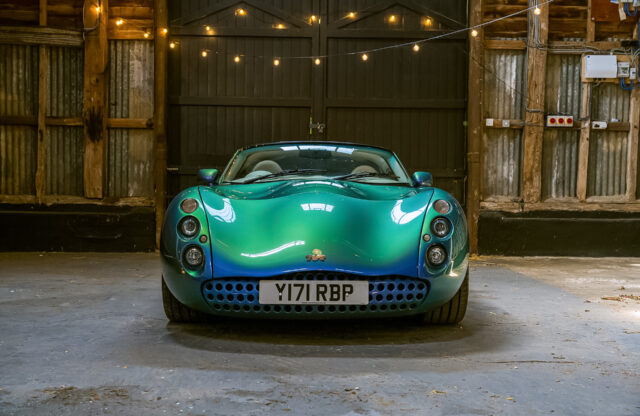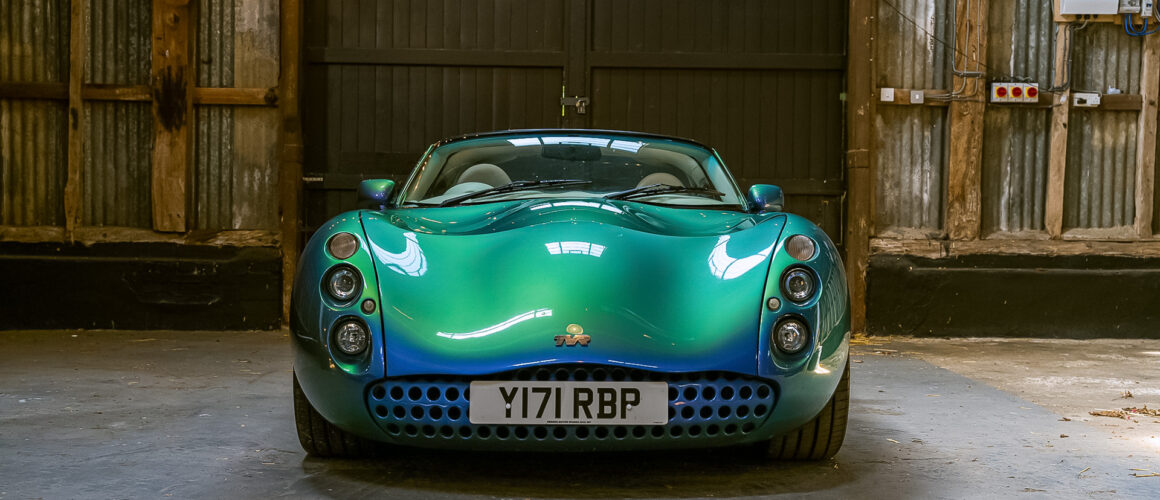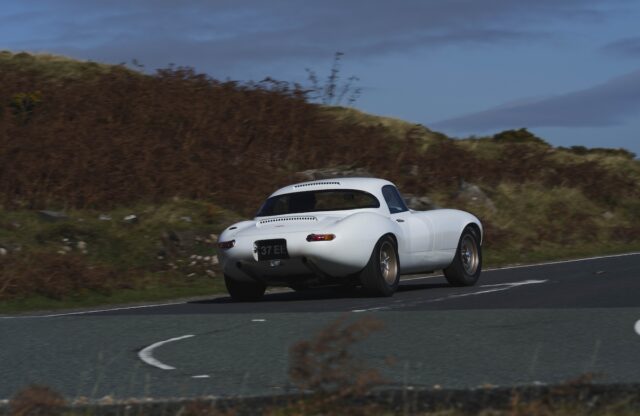Twenty-five years ago TVR launched the Tuscan, a flowing, swoopy, often-multicoloured car which wasn’t quite like anything that had come before. While the likes of the Griffith, Chimera and Cerbera had moved the British manufacturer on from the old ‘wedgy’ days, it was the Tuscan that struck a chord with a whole new generation of fans.
Cast your mind back to 1999, the year it was introduced. The 911 du jour was the 996, BMW’s E46 3er had appeared, Ferrari’s 360 Modena was box fresh and the Lamborghini Murciélago was still a couple of years off. The Tuscan looked completely different to not only anything else at the time but, realistically, anything that would follow, too.
Speaking to Ben Samuelson, former TVR head of PR, sales, and marketing, there’s a reason for that: TVR wanted to move the game on. “For a tweedy Yorkshire gentleman, Peter [Wheeler, TVR owner at the time] designed surprisingly wacky cars,” explains Samuelson. “The proportions underneath are still classic front-engine, rear-wheel-drive British sports car. He wanted to move it from the traditional wood and leather dash, he didn’t want parts-bin dials, gauges, indicator stalks and suchlike – so you saw the use of things such as copper, brass and aluminium in the cabin.”
A marvellous design, sure, but it was backed up by a collection of homegrown straight-six engines that came with anything between 350 and 440bhp (in the Mk2 T440R). Of course, there were no airbags, ABS set-ups or electronic aids to keep you in check – such things were believed to be of no real use by TVR. The person in the hotseat had everything they needed to avoid an accident: a left foot, a right foot, arms and eyes.
The cars gained something of a reputation for being a little ‘tricky’, but there was a reason for that. Samuelson explains: “Peter liked the cars to be incredibly darty. He felt understeer was a crime against humanity. So the cars would nose in like a terrier. And then you had to sort out the rear after it.”
The cars weren’t designed to be easy from the get go, either. Instead, they were made for people who really wanted to drive them: “It’s sort of a car that you have to learn. You learn how to drive it smoothly, you learn how to put it into reverse without crunching it, and you learn how to modulate your steering inputs so that as you change from third to fourth you don’t change lanes.”

Perhaps unkindly, when you mention you’re having a go in a TVR people screw their faces up and enquire how good your life insurance is
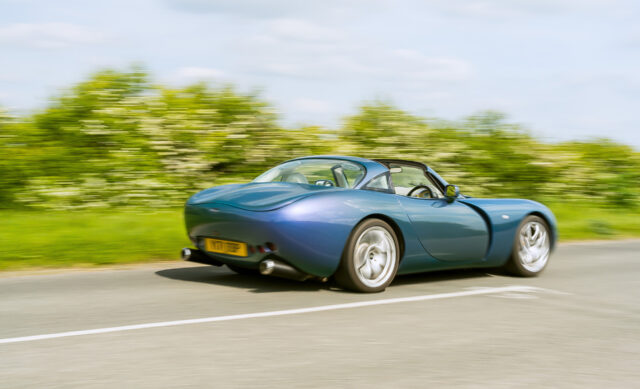
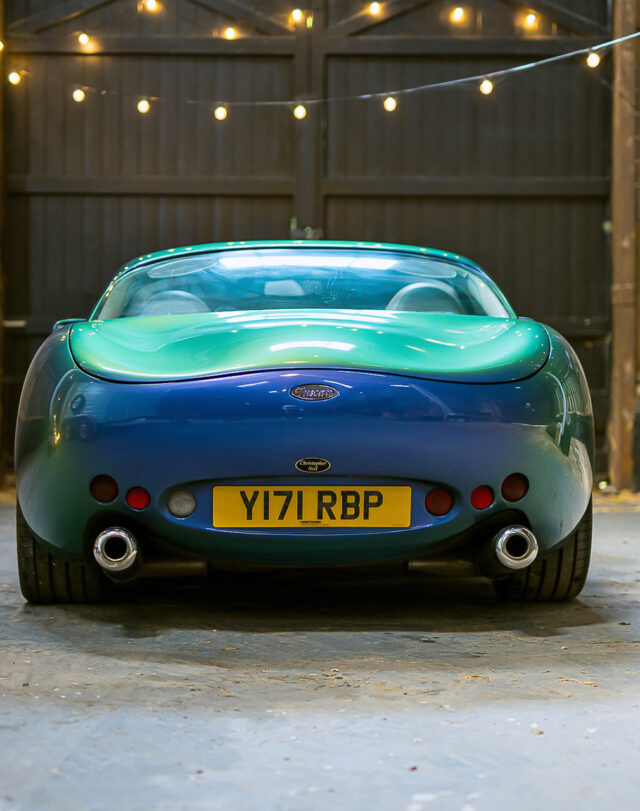
Weighing just 1110kg, and with more than ample power on board, the Tuscan delivered supercar-baiting performance without the supercar price tag. The wonderful way TVR worked was that while its cars were keenly priced, they could also take down giants: “Its main competitors would have been a Porsche Boxster or a Mercedes-Benz SLK. An SLK or a Boxster from that era couldn’t get out of its own way… We used to say that we were at the price of a Boxster and actually the straight-line performance of a 911 Turbo.”
How did the Tuscan find new fans? Aside from looking like a UFO (especially in flip-purple paint), it’s down to two people: Bugs Bunny and John Travolta. Britain’s TVR was a known quantity further afield than Blackpool, sure, but getting two of the world’s biggest stars behind the wheel on big screens all over the world ensured that the curvy spaceship became a global star.
The Swordfish-spec Tuscan is still talked about in hushed tones by people of a certain age. How on earth did that happen? Well: “It was in the days before emails. We got something like a fax from Warner Bros, but it didn’t look all that official. One of the designers on Swordfish subscribed to Top Gear magazine, and was a big fan of TVRs.” TVR, ever the smart marketer, jumped at the opportunity, and got more than it expected: “We got a sort of simple note and we managed to really love them to death, which got the car written much more into the film than it was ever meant to be. They were so cool, and it just grew and grew and grew.”
It wasn’t just the movies that shot the Tuscan, and TVR, to worldwide fame. TV appearances helped, as did the Gran Turismo PlayStation game. Samuelson recalls that back when Gran Turismo was a glint in Kazunori Yamauchi’s eye, gaming was seen very much as a thing for children, and as such it was often dismissed. Being a Sega Rally aficionado, Samuelson knew the potential gaming had for brand awareness, and showed Yamauchi what TVR was all about.
“When they explained what Gran Turismo was going to be. I was just like: ‘Okay, what do you need? What can I do?’ I took Yamauchi-san around Donington playing very silly sods and getting a lot of angle in Griffiths, and we looked after him at the factory.”
TVR’s efforts were noted, and Gran Turismo became something of a shopfront for TVR, and the Tuscan (which could be specified in Swordfish colours). “We were as enthusiastic about their projects as they were about our cars. It turned out to be an amazing marketing thing. I’d love to claim it was because I was really clever, but I was just enthusiastic. Just a big kid.”
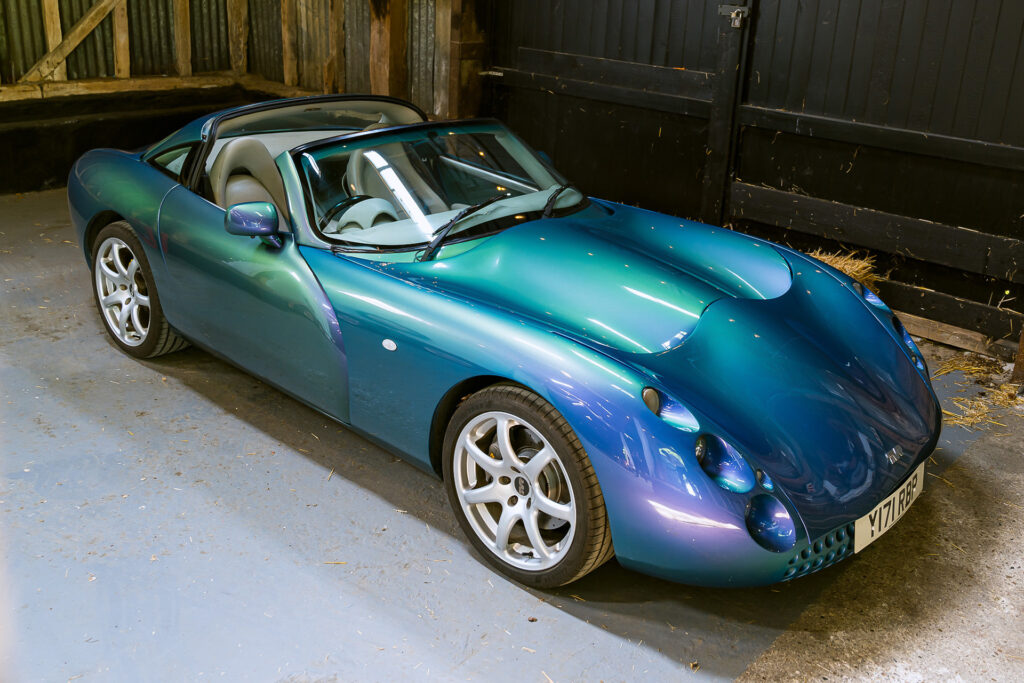
Does it hold up today? Perhaps unkindly, when you mention you’re having a go in a TVR people screw their faces up and enquire how good your life insurance is. Taking an early Tuscan for a drive was, and still is, eye opening. Every TVR, of course, has its quirks. Knowing where the door handle is can prove troublesome if you don’t know where to look (under the wing mirror), and once you’re in, trying to get out can also result in unfortunate fumbling and thoughts of escaping through the window (there’s a button on the centre console).
The first thing that grabs you is how wonderfully the interior design has held up. It was otherworldly back in the 1990s and early ’00s, and its curves, swoops and flourishes still work brilliantly today. In grey it’s pleasing to the eye, although there were some wild combinations available that were something of an assault on the senses. Still, ‘The customer is always right, in matters of taste,’ as H Selfridge famously said.
TVR’s use of colour and material on the switchgear is especially pleasing. Bright metal means you can see where the switches are without needing to look away from the road, or the speedometer. Speaking of… it’s wonderfully designed, but pretty tough to read in a hurry. If there are speed cameras about, it’s worth making triple sure you know how fast you’re going.
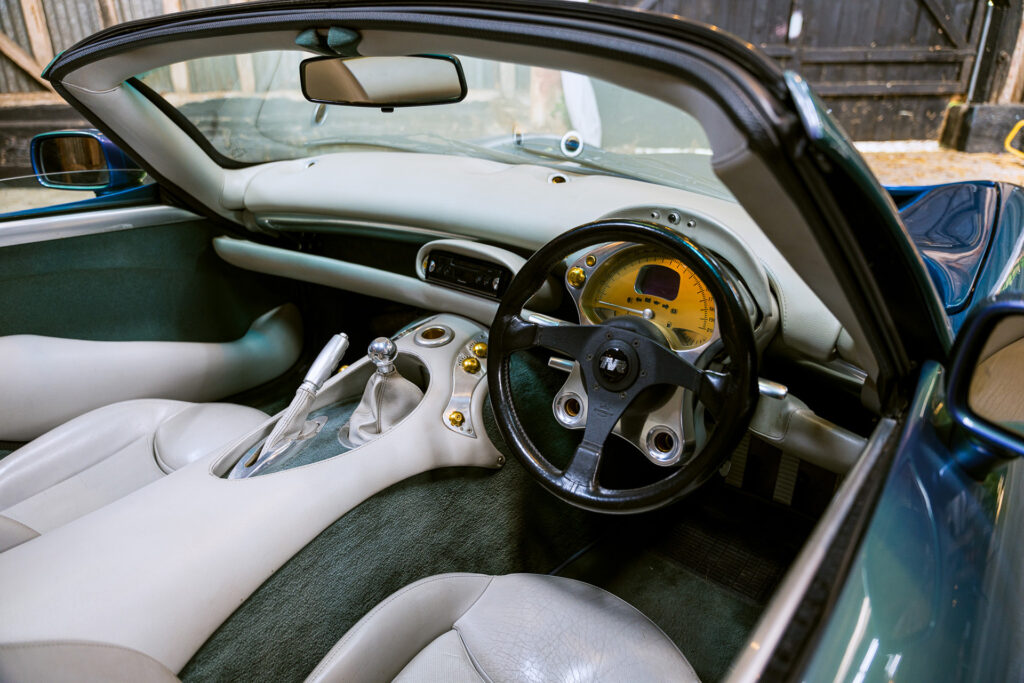
On start-up, the Speed Six motor is sensational. A bark is followed by a thrum, sound fires in every direction. It’s not hidden, damped or covered up so as not to offend any sensibilities. It makes big noise, and lets everyone know something special is on the way.
This particular example has been sympathetically upgraded over its life – carbonfibre airbox, carbonfibre pipes and straight-through back boxes, a main bonnet modification (for ease of engine-bay access), adjustable Gaz Monotube shocks all round, an AP Racing clutch and race-proven hydraulic clutch slave – to make it less, erm, ‘pointy’. Some may say modifying a TVR removes some of its charm, but to them the response is simple: don’t do it to yours then.
After 52,000 miles, it’s not had any major maladies, and its owner assures that it’s been driven as you’d hope for a TVR. They also mention that it’s used as a daily, which is about as admirable as it comes.
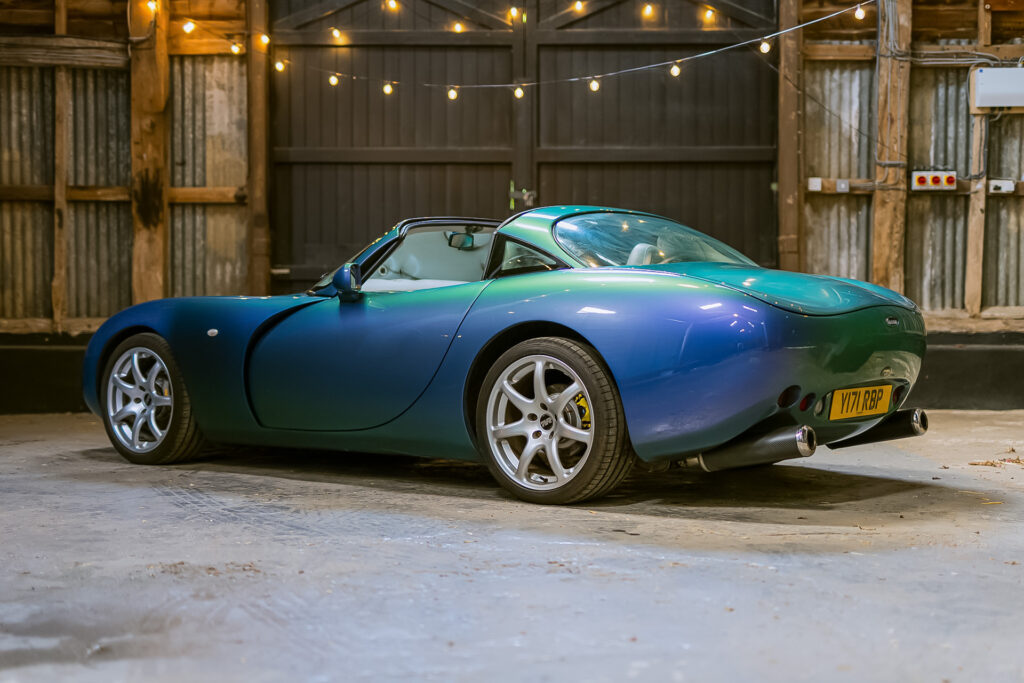
With slick floor-mounted pedals (very slippery when wet) and a generous pedal box, you needn’t worry about shoe choice too much – this was a car built by the legendarily tall Peter Wheeler after all – which puts a big tick in the ‘usability’ column. The tiny shifter has a short-enough throw to be exciting without simply being ‘punt and play’, and while it doesn’t require too much effort, it is grin-inducingly notchy.
The Tuscan’s steering is alarmingly direct. Yes, it’s a ’90s sports car, but even the slightest movement will fire the car in a different direction. It takes a bit to get used to – be sure to assure any passengers that no, the car isn’t trying to eat you, it just does things like that. Of course, its directness means it’s wonderfully sharp in corners, while its lack of weight obviously helps, too. The adjustable shocks have been set up so your back isn’t punished on rough roads, but it feels solid enough to give it some beans into a corner and not worry about lean.
Then there’s the power. Today 380bhp and 310lb ft is hot-hatch territory, but that tends to come with turbos, automatic gearboxes and heft. Power delivery here is smooth and fast, the engine rasping as you press on. Kick it over 3000rpm and it begins to scream, which has the fun side effect of plastering a massive grin over your face and surprisingly big numbers on the speedo (as long as you can read it).

As you drive you learn more about its sensitivities, its quirks and the best way to go about Tuscan-ing. It’s an addictive process, and one that’s likely easy to learn but will take a long time to master. Also, the longer you drive this TVR, the more you wish you invested in driving gloves – as the transmission warms up, the metal gearlever conducts heat skywards, a process lovingly known as ‘hot knob’.
All these years on, the Tuscan honestly feels like a revelation. Low weight, direct controls, achingly cool in-house switchgear, still-fresh looks and a marvellous motor all add up to an incredible package. The boot is big enough for ‘things’, the cabin isn’t cramped and you can even pop the roof off if you fancy it.
Today we’re used to heavier sports cars kitted out with idiot-proof tech that can provide a useful, if occasionally heavy-handed safety net. After a spin in the Tuscan, it’s easy to forget just how good we had it. And how much we’d value something as engaging today.
